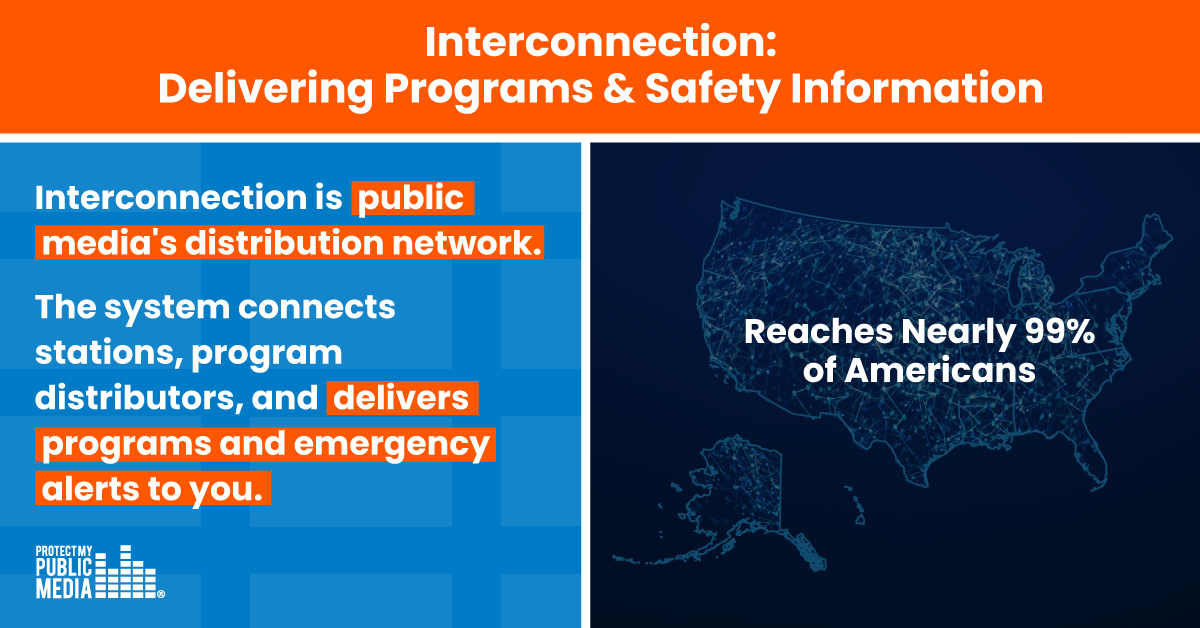
Delivering Programs and More
Public media’s interconnection system is a distribution network that enables local stations to deliver our favorite programs, the news, music, and emergency communications every day for free.
For more than 20 years, Congress has provided federal funding for public media’s interconnection system, which requires periodic updates to meet advancements in broadcast technology. When we ask Congress to fully fund public media, this request includes interconnection.
If interconnection funding is cut, we could lose access to the programming we enjoy today and the public safety communications we rely on before, during, and after emergencies. With your help, we can make sure that doesn't happen.
Why is interconnection important?
No matter where we live, interconnection ensures that local public media stations can provide programming and lifesaving emergency communications. It’s the only system that reaches nearly 99 percent of our nation for free – virtually every American household. In fact, in rural or remote areas, public media stations are often the only source of local and emergency information. See how public media's interconnection system works below.
Interconnection leverages cost-effective, high quality, and reliable satellite and digital technologies to provide the infrastructure that allows stations to:
Send and receive programming.
Interconnection allows our local public media stations to deliver news, educational programming, music, and more to viewers and listeners across the U.S. Without interconnection, we would lose access to many of the programs we enjoy today.
Provide Americans with timely, critical information before, during, and after emergencies.
During a disaster, public media’s interconnection system receives emergency alert information directly from FEMA, which it can transmit to the 1,207 independently-operated radio stations and 357 public television stations nationwide, reaching nearly 99 percent of the United States. Stations serving the affected areas broadcast the alerts, even when power grids and internet services are down. Public media stations also share FEMA emergency alerts with cell phone carriers to support the Wireless Emergency Alert (WEA) system that sends geo-targeted text messages with emergency information to cell phones in the affected area.